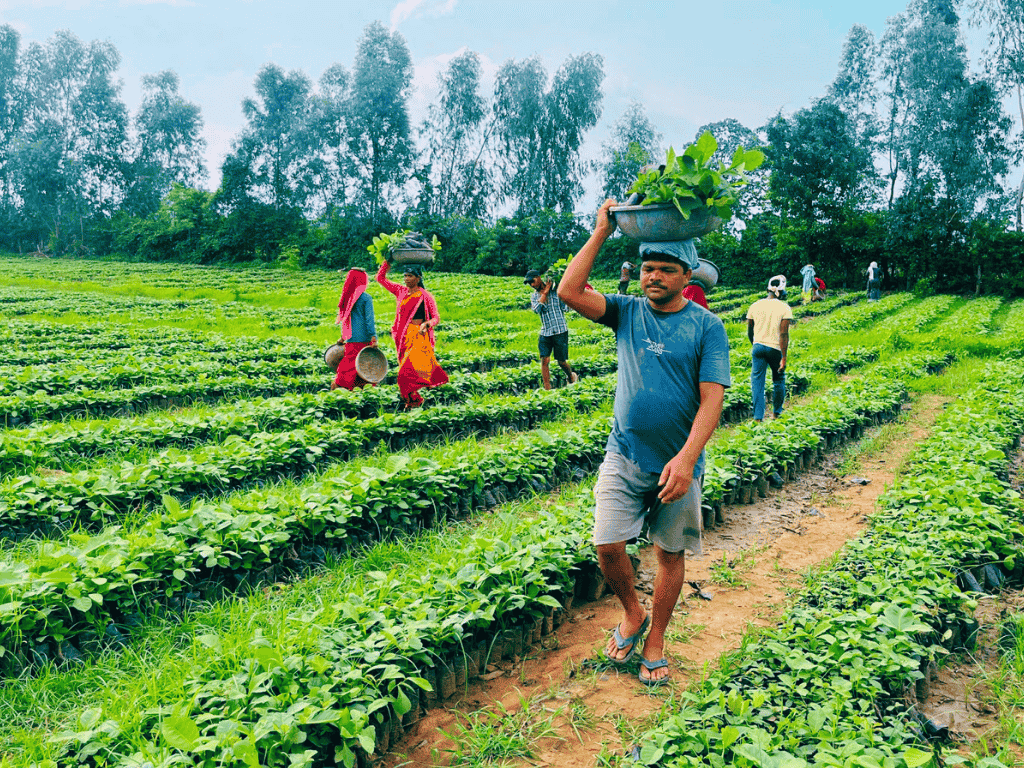Let me start with a confession. When I first heard of a plan to plant 20 million trees in West Bengal by 2028, my first thought was: “Bah, who has the stamina for such lofty promises?” Then I took a closer look at IMPCA, the people behind this Herculean mission. And I’ll admit—these aren’t your run-of-the-mill corporate do-gooders. These folks mean business, and their business is nature.
From Madhya Pradesh to the Sundarbans: A Tale of Trees and Tenacity
If IMPCA’s story in Madhya Pradesh was a novel, it would be a bestseller. Over the last two years, they’ve planted 12 million saplings—teak, bamboo, guava, neem—across waste and unused agricultural lands. This wasn’t some naïve afforestation drive. It was strategic, measured, and deeply rooted (pun intended) in farmer welfare.
They worked with 18,000 farmers, turning barren lands into thriving green hubs, all without disturbing the existing land-use patterns. These trees aren’t just carbon sponges; they’re future income streams. Teak for timber, guava for fruit, neem for its medicinal value. Everyone benefits—farmers, biodiversity, and of course, the atmosphere.
And now, they’ve set their sights on West Bengal—a state of rivers, rice fields, and resilience.
West Bengal: The Next Frontier
By 2028, IMPCA aims to plant 20 million trees in West Bengal. Think about that for a moment. Twenty million. That’s not just a number; it’s a vision. A transformation.
Why West Bengal, you ask? It’s simple. This state isn’t just about Kolkata’s chaotic charm or Darjeeling’s misty mornings. It’s about the Sundarbans, the mangroves battling rising sea levels, the farmers braving unpredictable monsoons, and the villages caught between tradition and survival.
IMPCA’s project isn’t just about planting trees. It’s about planting hope. The saplings chosen—mangroves, fruit-bearing trees, timber species—aren’t random. They’re tailored to the land’s needs and the people’s future. Mangroves to protect coastal areas from erosion and floods. Timber trees for long-term income. Fruits to feed families and markets.
Community Impact: More Than Just Trees
Here’s where the story gets human. This project will involve 25,000 farmers and local workers, offering them a livelihood that doesn’t depend on unpredictable rains or exploitative middlemen.
Imagine a farmer in the Sundarbans. For years, he’s battled soil salinity and cyclones. Now, he’s part of a project that not only pays him for planting and nurturing trees but also promises a future where his land yields more than just despair.
And it’s not just farmers. Women, too, are being trained to manage nurseries and monitor plantations. This isn’t charity; it’s empowerment.
Carbon Credits: The Corporate Angle
Let’s not forget why companies should care. Each of these 20 million trees is a soldier in the battle against climate change. They absorb CO2, restore ecosystems, and, crucially, generate Verra-compliant carbon credits.
For companies drowning in emissions, these credits are a lifeline. They’re also a badge of honor in the ESG (Environmental, Social, Governance) world. By partnering with IMPCA, companies aren’t just offsetting their carbon footprint; they’re investing in a future where profits and planet go hand in hand.
How You Can Be Part of This Green Revolution
IMPCA’s West Bengal project isn’t just for governments and big corporations. Small businesses, NGOs, even individual donors can join the movement.
Imagine this: a company sponsors a thousand trees. Those trees generate carbon credits, which the company can use to meet its sustainability goals. Meanwhile, a farmer in West Bengal gets a steady income. The land breathes again. The planet heaves a small sigh of relief.
A Legacy Worth Leaving
I’ve seen enough in my years to know that promises are cheap, and action is rare. But what IMPCA is doing in West Bengal isn’t just action; it’s transformation.
Twenty million trees by 2028 isn’t just a target; it’s a testament to what’s possible when vision meets determination. It’s a reminder that the best way to fight climate change is to start small, think big, and act fast.
And when these trees grow into forests, when farmers see their children educated with the income they generate, when companies proudly showcase their carbon-neutrality milestones, we’ll all know: this wasn’t just about planting trees. It was about planting a future.


